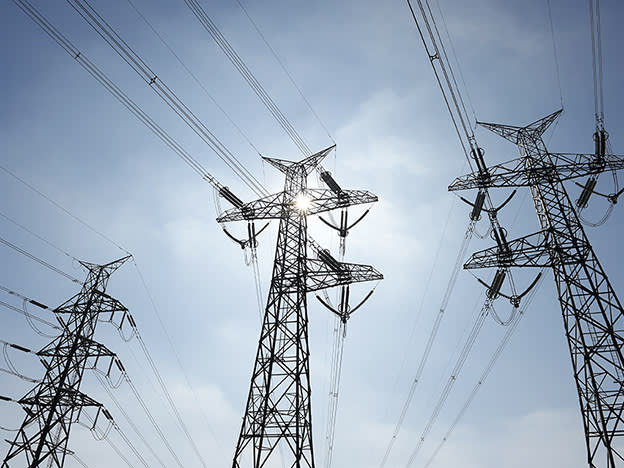Infra
The infrastructure trusts with narrowing discounts

- Infrastructure trusts staged a partial recovery in November
- Will it hold?
Infrastructure trusts have seen their average discounts to net asset value (NAV) narrow in the past month, as the decline of government bond yields brought some good news for the sector. But not all the trusts recovered to the same degree, overall discounts remain wide and the sector’s immediate future still looks uncertain.
The average weighted discounts for the Association of Investment Companies’ (AIC) infrastructure and renewable energy sectors decreased by 6.6 and 5.8 percentage points respectively between the end of October and 8 December – from 23.3 per cent to 16.7 per cent for infrastructure and from 24.5 per cent to 18.7 per cent for renewable energy. Over the same period, UK 10-year gilt yields reduced from about 4.5 per cent to 4 per cent, highlighting just how correlated infrastructure trusts have proved to be to interest rates.
Top performers
Last month’s top performers were in the battery storage space, which partially bounced back after months of severe underperformance in the summer. Discounts remain wide (around 26 per cent) for this area of infrastructure, which faces questions over the sustainability of its UK revenues. Of the three battery storage trusts, Gore Street Energy Storage (GSF) has delivered the best returns (or least bad returns) over the past year, partially thanks to its higher exposure to foreign assets. Its share price total return was still down by 16 per cent in the year to 8 December, against 32.7 per cent for Harmony Energy Income (HEIT) and 34.2 per cent for Gresham House Energy Storage (GRID).
In the core infrastructure sector, HICL Infrastructure (HICL) and International Public Partnerships (INPP) both had a strong run, with share price total returns of 5.8 per cent and 7.3 per cent respectively in the month to 8 December. Both trusts have been focusing on reducing debt levels. INPP is in the process of selling a second asset for this purpose, according to an update published last week.
Sector giant Greencoat UK Wind (UKW) returned 2.3 per cent in the month, less than some peers, but remains the only renewable energy trust with a positive share price total return performance on a one-year basis. Its strong cash generation and inflation-linked dividends have made it attractive to investors; but this could also be a sign that wealth managers have been prioritising the bigger, more liquid trusts.
Last week, the trust announced that co-manager Laurence Fumagalli will be stepping down in March 2024 and will be replaced by Matt Ridley, currently head of private markets at Schroders Greencoat.
Cordiant Digital Infrastructure (CORD) had a strong month and at the end of November posted what Numis analysts dubbed “a relatively robust performance over the period against a challenging market backdrop”. The trust is still trading at a pretty hefty 35 per cent discount, perhaps partly influenced by the issues experienced by the other trust in the digital infrastructure space, Digital 9 Infrastructure (DGI9), the worst performer in the month among infrastructure trusts by some length. Underperformers this month despite the sector recovery also included private public partnerships global investor BBGI Global Infrastructure (BBGI), Octopus Renewables Infrastructure (ORIT) and VH Global Sustainable Energy Opps (GSEO).
The narrowing of the discounts in the infrastructure sector was also helped by the less than stellar returns delivered by the underlying assets. Most infrastructure trusts reported small NAV declines in the third quarter of 2023, often driven by discount rate increases, as the trust’s valuations catch up with interest rates. One of the worst performers NAV-wise was SDCL Energy Efficiency Income Trust (SEIT), whose NAV declined by 10.7 per cent in the six months to 30 September.
James Carthew, head of investment companies at QuotedData, noted that the trusts had to contend with the reversal of high power prices in the wake of Russia’s invasion of Ukraine. “Some of the estimates of future power prices were too optimistic. As this has worked its way out of the system it is putting downward pressure on NAVs,” he said. Depending on the weather and on any new interruption to gas supplies, power prices may yet spike upwards again, he added.
Will the recovery take off?
Most of the recent recovery for the infrastructure sector happened around mid-November, and share prices have since somewhat stabilised, but they are still far from where they were a year-and-a-half ago.
Carthew said he sees a “growing feeling that interest rates have peaked” as a reason for optimism. “While the consensus is that rate cuts are some way off yet, that has been enough to trigger a narrowing of discounts and I’d expect that situation to persist,” he noted.
Stifel analysts argued that there might be “scope for further recovery in the months ahead assuming continued declines in inflation, gilt/bond yields and interest rate expectations”. “We think if the UK gilt yield ends the year around 4.2 per cent, there will be an expectation that discount rates used by the infrastructure funds when valuing their portfolios will have peaked. This should help sentiment towards the sector,” they noted.
But a quick recovery remains unlikely and much hinges on how inflation, the economy and interest rates move in 2024.










